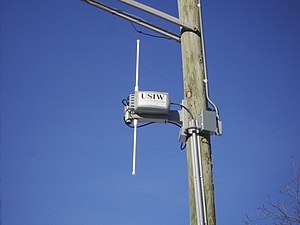It seems unlikely that an upstart mobile OS open source could make any waves in a market dominated by Android and iOS. Windows Phone and BlackBerry may find many followers, but OS Firefox? Not likely - at least not in the developed world. Firefox may be able to sink their teeth into emerging markets, however, they are hungry for more low-cost devices.
The Mozilla Foundation announced Tuesday that its Firefox OS smartphones will be available to developers in February.
Preview phones are being produced in collaboration with Geeksphone and Telefónica.
The idea is to attract developers to create applications for OS Firefox.
"These devices are not designed for consumers," said spokeswoman Diane Zuniga LinuxInsider Mozilla. Are preliminary versions of Firefox OS development.
"Today's announcement is not a commercial release for Firefox OS," he said Zuniga. That is expected to take place later this year.
The idea is to attract developers to create applications for OS Firefox.
"These devices are not designed for consumers," said spokeswoman Diane Zuniga LinuxInsider Mozilla. Are preliminary versions of Firefox OS development.
"Today's announcement is not a commercial release for Firefox OS," he said Zuniga. That is expected to take place later this year.
Dev Phone SpecificationsTwo smartphones are aligned to the dev preview.The Keon, who is touted as a developing device light, has a 1 GHz Qualcomm Snapdragon CPU S1. It sports a 3.5-inch mid-size VGA (HVGA) multitouch display and a 3 MP camera.The peak is the heavyweight. IT has a Qualcomm Snapdragon S4 dual-core 1.2 GHz CPU.It features a 4.3-inch qHD display. With a screen resolution of 960 x 540 pixels, QHD screen frame offer an en HD 1080p in a 16:9 aspect ratio. HTC Sensation and Evo 3D, like the Motorola Droid Razr and PlayStation Vita around the use of qHD screens.In addition, the peak has a 8 MP camera with flash.Both phones include a MicroSD slot, light and proximity sensors, GPS, and a microUSB slot. 802.11n WiFi support. Both operate high-speed packet access (HSPA) 3G and GSM communications for communications 2G EDGE.Pricing will be announced in early February.Mozilla StrategyFirefox
operating system, called "Boot to Gecko", or B2G, was designed to allow
applications to integrate HTML5 with hardware devices "using JavaScript.B2G has been demonstrated in different smart phones, including the Nexus S smartphone Samsung and ZTE, and the Pi on raspberry.GeeksPhone
devices "allow developers to test the capabilities of Firefox OS in a
real environment beyond the facilities provided by existing emulators,"
Zuniga said Mozilla. "It will be possible to test some features as actual performance and interaction with the mobile network."The
first commercial versions of mobile dev will focus on "best performance
smartphones at affordable prices in Latin America and Telefónica
Europe," he said. Other plans will be announced later.Analyzing Mozilla plans"What
Mozilla is doing is good for the ecosystem Web Web pushing the platform
as a development environment first-class," said Al Hilwa, program
director at IDC research, LinuxInsider."Aside
from the maturity of tools and tests, the key issue in the birth of a
new hardware platform is the number of devices that a developer can
achieve a unity of effort," he said.The
attractive write-once-run-on-many of HTML5 that Mozilla seems to be
counting on that success could not be quite the way it is expected that
because "the exploitation of advanced device features in web
applications requires of a single work and extensive testing platform for a critical application, "said Hilwa. "The challenge facing Mozilla is if he can break into the mass market with its platform."Android and iOS mobile phone OS market sewn, and even a competitor with deep pockets like Microsoft faces an uphill climb.As
for the potential of the brand new Firefox OS ', "given the diversity
of the participants, it is difficult not to be skeptical," said Hilwa.Room for one more?On
the other hand, mobile operators "seem tired of the domination of Apple
and Android," said Carl Howe, research vice president at Yankee Group."Although
we have not seen a successful Internet-only mobile operating system,
however, we could see these platforms play an important role in
low-cost smartphones for emerging markets," said Howe LinuxInsider."No
need to pay for operating system licenses and cheap mobile Web
applications that take the place of a more expensive native application
development," said he, "a web-based mobile operating system could
reduce costs and shorten the time marketing for smart phone makers is focused on low-(U.S.) market of $ 150





















